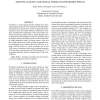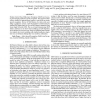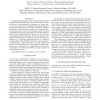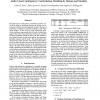28 search results - page 3 / 6 » Improving speech recognition by explicit modeling of phone d... |
INTERSPEECH
2010
13 years 23 days ago
2010
Recently, Deep Belief Networks (DBNs) have been proposed for phone recognition and were found to achieve highly competitive performance. In the original DBNs, only framelevel info...
ICASSP
2011
IEEE
12 years 9 months ago
2011
IEEE
Dysarthria is a motor speech disorder resulting from neurological damage to the part of the brain that controls the physical production of speech and is, in part, characterized by...
ICASSP
2009
IEEE
14 years 21 days ago
2009
IEEE
Features derived from Multi-Layer Perceptrons (MLPs) are becoming increasingly popular for speech recognition. This paper describes various schemes for applying these features to ...
ICASSP
2011
IEEE
12 years 9 months ago
2011
IEEE
Exemplar-based techniques, such as k-nearest neighbors (kNNs) and Sparse Representations (SRs), can be used to model a test sample from a few training points in a dictionary set. ...
INTERSPEECH
2010
13 years 23 days ago
2010
The phenomenon of anticipatory coarticulation provides a basis for the observed asynchrony between the acoustic and visual onsets of phones in certain linguistic contexts. This ty...




